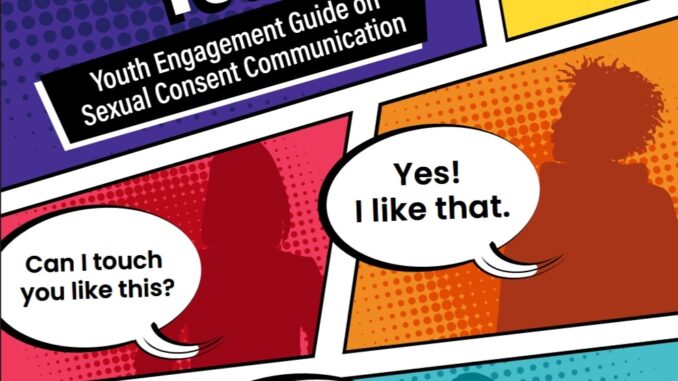
BY JADA SIMON
On Wednesday, October 18, New York City Teens Connection conducted a training, educating teachers on how to inform students about healthy and safe sexual health practices in a comfortable manner.
New York City Teens Connections is an adolescent sexual health program within the Department of Health and Mental Hygiene. At the meeting, teachers learned how to answer tough questions, what language to use to relate to youth when teaching sex education, facts/tips about pregnancy and HIV and how to be inclusive of LGBTQIA+ and disabled students.
According to NYCTC, teaching the youth starts with learning the youth.
“We have 30 youth that we hire that actually inform our work,” said Sabrina Cabello Murray, Assistant Director of Evidence Based Programs and Schools. “We ask the youth so they can tell us, well, we’re not really talking like that anymore or that’s not what teens are talking about or this is what we need and that helps to inform the work to keep it current.”
There were different reactions amongst the crowd of teachers. Some teachers were excited to learn more about teaching sexual education because it’s something they’ve been teaching for over ten years. Others were scared because it would be their first time teaching the topic. Then there were some who would be teaching sex ed for the first time as well but were still excited.
“In the spring we’ll be doing health. I’m excited to teach health, especially sex ed, because I went to a Catholic school so there was zero discussion,” said Catherine Kemm, a 9th grade advisor and 10th grade ELA teacher at Bronx River High School. “It was all abstinence and I think that just wasn’t fair and empowering to students at all.”
This segued into some of the fears teachers had about teaching sexual health, such as “instigatory questions.” A 10th grade biology teacher said that over the past few years she’s had comments like, “Aren’t you encouraging us to have sex?” and “This is all made up, people don’t know what they’re talking about” in reference to options for LGBTQIA+ students while students that fit into that group were present in the classroom.
“If we’re talking about health and safety, safety for who, because there are people who fit into that category that don’t feel comfortable and accepted,” said the teacher.
Assistant Director Murray said that the way to deal with situations such as these is to set group agreements in the classroom. This means that before beginning the course, it would be best for teachers to establish ground rules with their students. The number one ground rule Murray recommends is “no personal questions.”
Murray provided an example of how she was once asked by a student if she had ever “swallowed.” Rather than getting upset at the student she decided to respond a different way.
“Instinctively I want to be like, ‘Sit your little fast tail down!’ but that’s not a good idea at that moment because somebody else who has another question may now feel like I’m a mean person and they’re not going to ask me anything,” said Murray. At that point teachers can say “no personal questions” but if a student wants to know what happens when a person “swallows,” Murray recommends not shutting the conversation down.
She also introduced another tactic teachers can use called “Some, Others, You.” This tactic is a way of taking the hard questions and allowing students to make decisions for themselves without all the pressure being on the teacher.
Murray said that children may sometimes ask teachers “permission seeking questions,” which are questions they ask in order to indirectly get permission to engage in sexual acts, so to avoid that teachers can use this tactic.
For example, if a kid asks “Is it okay to masturbate?” teachers can say “Some people have really strong feelings about people who masturbate and touch themselves and give themselves sexual pleasure outside of a marriage, other people feel like it’s okay to touch yourself because you can’t get pregnant, you can’t get an STI, but you have to decide what your comfortable with, ” said Murray.
Teachers were given HIV risk behavior materials that provided examples of sexual behaviors that pose no risk, some risk and high risk so that students are aware of what practices can cause HIV and even unwanted pregnancy.
There were also different resources and information provided about HIV and how to be inclusive of disabled students. It was mentioned that some teaching professionals don’t think disabled students need sex ed.
“Most teachers indicate that students without IDD (Intellectual or developmental disability) or with mild IDD would benefit from sexual education but only 25% of those teachers said that students with moderate to profound IDD would benefit from sex education,” said one of the NYC Teens connections representatives. The representative added that regardless of this stigma “Students with IEPS are sexual beings and we want to make sure that they’ve been getting comprehensive sexual and reproductive health as well.”
Murray said that she just wants to take away the shame and she is always happy to help students stay focused on being safe. “For 24 years, I’ve been doing sex education in middle school and then I went to high school and adolescent sex ed has been my life,” said Murray. “I feel great about it because I know that doing this could help young people take charge of their lives.”
